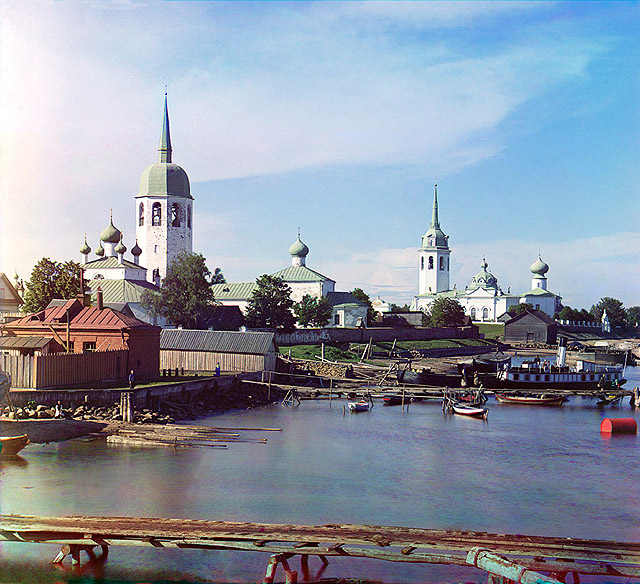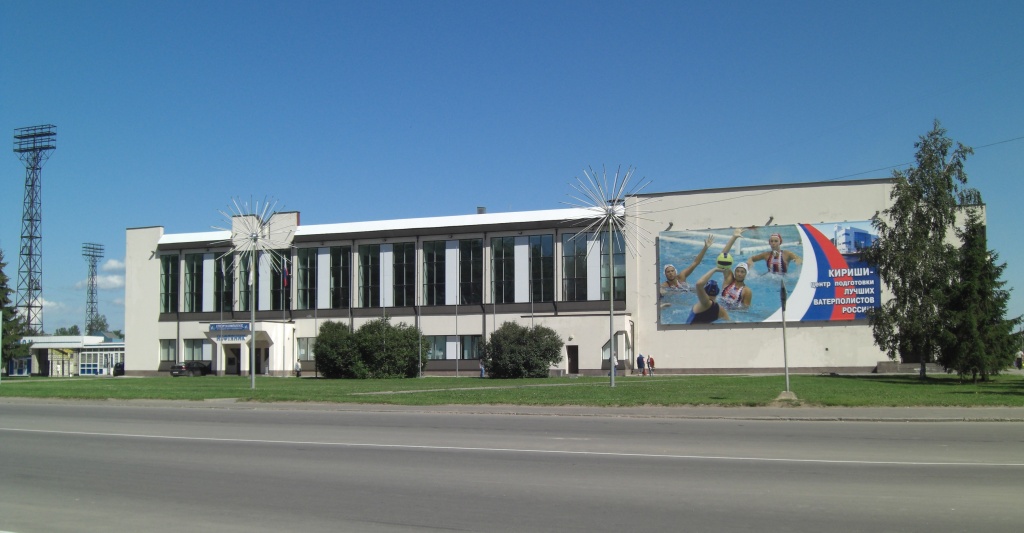|
Volkhov
Volkhov (russian: Во́лхов) is an industrial town and the administrative center of Volkhovsky District in Leningrad Oblast, Russia, located on the river Volkhov east of St. Petersburg. Population: It was previously known as ''Zvanka'' (until December 27, 1933), ''Volkhovstroy'' (until April 11, 1940). History The town developed during the industrialization in the first half of the 20th century. The settlement of Zvanka () with a train depot was built here while the railway connecting St. Petersburg with Vologda was being constructed. It was a part of Novoladozhsky Uyezd of St. Petersburg Governorate. A second rail line running north of the station towards Murmansk was constructed in 1916, making the station an important railway junction. In 1918, construction of the Volkhov Hydroelectric Station (the first in the Soviet Union) started on this spot. In 1926, the power plant became operational and in 1932, the first Soviet aluminum plant was ... [...More Info...] [...Related Items...] OR: [Wikipedia] [Google] [Baidu] |
Volkhov Train Station
Volkhov (russian: Во́лхов) is an industrial town and the administrative center of Volkhovsky District in Leningrad Oblast, Russia, located on the river Volkhov east of St. Petersburg. Population: It was previously known as ''Zvanka'' (until December 27, 1933), ''Volkhovstroy'' (until April 11, 1940). History The town developed during the industrialization in the first half of the 20th century. The settlement of Zvanka () with a train depot was built here while the railway connecting St. Petersburg with Vologda was being constructed. It was a part of Novoladozhsky Uyezd of St. Petersburg Governorate. A second rail line running north of the station towards Murmansk was constructed in 1916, making the station an important railway junction. In 1918, construction of the Volkhov Hydroelectric Station (the first in the Soviet Union) started on this spot. In 1926, the power plant became operational and in 1932, the first Soviet aluminum plant was launc ... [...More Info...] [...Related Items...] OR: [Wikipedia] [Google] [Baidu] |
Volkhovsky District
Volkhovsky District (russian: Во́лховский райо́н) is an administrativeOblast Law #32-oz and municipalLaw #56-oz district (raion), one of the seventeen in Leningrad Oblast, Russia. It is located in the central eastern part of the oblast and borders with Lodeynopolsky District in the northeast, Tikhvinsky District in the southeast, Kirishsky District in the south, and with Kirovsky District in the west. In the north, it is washed by Lake Ladoga. The area of the district is .Official website of Volkhovsky DistrictVolkhovsky Municipal Districts in Figures and Facts Its administrative center is the town of Volkhov. Population (excluding the administrative center): 50,799 ( 2002 Census); Geography The whole area of the district belongs to the drainage basin of Lake Ladoga. The main river in the western part of the district is the Volkhov, and the center of the district belongs to the river basin of the Syas. Both the Volkhov and the Syas are major tributaries of L ... [...More Info...] [...Related Items...] OR: [Wikipedia] [Google] [Baidu] |
Volkhov (river)
The Volkhov (russian: Во́лхов) is a river in Novgorodsky and Chudovsky Districts of Novgorod Oblast and Kirishsky and Volkhovsky Districts of Leningrad Oblast in northwestern Russia. It connects Lake Ilmen and Lake Ladoga and forms part of the basin of the Neva. The length of the river is , and the area of its drainage basin is . The city of Veliky Novgorod, the towns of Kirishi, Volkhov and Novaya Ladoga, and the historically important village of Staraya Ladoga are located along the Volkhov. Etymology A number of etymologies, none universally accepted, have been proposed for the name of the river. In his ''Etymological dictionary of the Russian language'', Max Vasmer doubted some philologists' opinion that the river's name is related to the Finnish ''velho'' ("magician") or Russian ''volkhv'' ("pagan priest"). Geography The Volkhov flows out of Lake Ilmen north into Lake Ladoga, the largest lake in Europe. It is the second largest tributary of Lake Ladoga. It is na ... [...More Info...] [...Related Items...] OR: [Wikipedia] [Google] [Baidu] |
Novaya Ladoga
Novaya Ladoga (russian: Но́вая Ла́дога, lit=New Ladoga) is a town in Volkhovsky District of Leningrad Oblast, Russia, located at the point where the Volkhov River flows into Lake Ladoga, east of St. Petersburg. Population: History The Nikolo-Medvedsky ( St. Nicholas) Monastery stood on the site of the modern town since the 15th century, but the nearby '' sloboda'' was long overshadowed by the first Russian capital, Staraya Ladoga, located just a few miles upstream. In 1702–1704, during the Great Northern War, Peter the Great established a shipyard there, fortified the monastery, and ordered the population of Staraya Ladoga to relocate to the nearby village. Town rights were granted to it in 1704. The newly founded town grew in importance in connection with construction of the Ladoga Canal and Volga-Baltic Waterway in the 18th and 19th centuries. In 1719, Novaya Ladoga was included to St. Petersburg Governorate. In 1727, separate Novgorod Gov ... [...More Info...] [...Related Items...] OR: [Wikipedia] [Google] [Baidu] |
Volkhov Hydroelectric Station
Volkhov hydroelectric plant (russian: Волховская ГЭС имени В. И. Ленина, Volkhovskaya GZS imeni V. I. Lenina), named after V.I. Lenin, is a hydroelectric station on the Volkhov River located in the town of Volkhov, Leningrad Oblast, in northwestern Russia. It is the oldest and longest serving hydroelectric plant in Soviet Union and Russia. It is a part of the Ladoga cascade. Construction work started in 1918. On September 16, 1921 it was included into a GOELRO plan. Genrikh Graftio Genrikh Osipovich Graftio (russian: Генрих Осипович Графтио, 26 December 1869 in Dünaburg – 30 April 1949 in Leningrad) was a Russian/Soviet engineer credited as a pioneer of the hydroelectric station construction, as o ..., one of the founders of the plan, was in charge of the construction of the station. The plant was completed in 1927 with a capacity of 6,000 kilowatts. [...More Info...] [...Related Items...] OR: [Wikipedia] [Google] [Baidu] |
Leningrad Oblast
Leningrad Oblast ( rus, Ленинградская область, Leningradskaya oblast’, lʲɪnʲɪnˈgratskəjə ˈobləsʲtʲ, , ) is a federal subject of Russia (an oblast). It was established on 1 August 1927, although it was not until 1946 that the oblast's borders had been mostly settled in their present position. The oblast was named after the city of Leningrad. In 1991, the city restored its original name, Saint Petersburg, but the oblast retains the name of Leningrad. The capital and largest city is Gatchina. The oblast overlaps the historic region of Ingria and is bordered by Finland (Kymenlaakso and South Karelia) in the northwest and Estonia ( Ida-Viru County) in the west, as well as five federal subjects of Russia: the Republic of Karelia in the northeast, Vologda Oblast in the east, Novgorod Oblast in the south, Pskov Oblast in the southwest, and the federal city of Saint Petersburg in the west. The first governor of Leningrad Oblast was Vadim Gustov (in 1996 ... [...More Info...] [...Related Items...] OR: [Wikipedia] [Google] [Baidu] |
Kirishi
Kirishi (russian: Ки́риши, ) is a town and the administrative center of Kirishsky District in Leningrad Oblast, Russia, located on the right bank of the Volkhov River, southeast of St. Petersburg. Population: It was previously known as ''Soltsy'' (until 1931). Etymology The name of the town originates from the Kirisha River (previously known as Kiresha), a tributary of the Volkhov River. History It was first mentioned in 1693. Since 1727, it was a part of Novoladozhsky Uyezd of Novgorod Governorate, later of St. Petersburg Governorate. In 1922–1923, the uyezd was renamed Volkhovsky. Before 1931, Kirishi was known as Soltsy. On August 1, 1927, the uyezds were abolished and Andreyevsky District, with the administrative center in the '' selo'' of Andreyevo, was established. The governorates were also abolished and the district became a part of Leningrad Okrug of Leningrad Oblast. Kirishi became a part of Andreyevsky District. On September 30, 19 ... [...More Info...] [...Related Items...] OR: [Wikipedia] [Google] [Baidu] |
Chudovo, Chudovsky District, Novgorod Oblast
Chudovo (russian: Чýдово) is a town and the administrative center of Chudovsky District in Novgorod Oblast, Russia, located on the Kerest River (a left tributary of the Volkhov). Population: History The village of Chudovo was first mentioned in chronicles in 1539. By the mid-18th century, it developed into a big '' selo'' with a postal service station. By the beginning of the 19th century, Chudovo was the seat of Chudovskaya Volost of Novgorodsky Uyezd in Novgorod Governorate. The development of the area was further aided by the construction of the Moscow–St. Petersburg Railway, which opened in 1851. The railway to Novgorod was completed in 1871. A match factory, two cement-making factories, and a number of porcelain factories were built. In August 1927, the uyezds were abolished and, effective October 1, 1927, Chudovsky District was established, with the administrative center in Chudovo.Snytko et al., pp. 85–87 Novgorod Governorate was abolishe ... [...More Info...] [...Related Items...] OR: [Wikipedia] [Google] [Baidu] |
Novoladozhsky Uyezd
Novoladozhsky Uyezd (''Новоладожский уезд'') was one of the subdivisions of the Saint Petersburg Governorate of the Russian Empire. It was situated in the northeastern part of the governorate. Its administrative centre was Novaya Ladoga. Demographics At the time of the Russian Empire Census of 1897, Novoladozhsky Uyezd had a population of 87,841. Of these, 99.1% spoke Russian, 0.3% Latvian, 0.1% Finnish, 0.1% Yiddish, 0.1% Estonian, 0.1% German and 0.1% Polish as their native language. Демоскоп Weekly - Приложение. Справочник статистических показателей In terms of present-day administrative borders, Novoladozhsky Uyezd is divided between the Volkhovsky D ... [...More Info...] [...Related Items...] OR: [Wikipedia] [Google] [Baidu] |
Moscow
Moscow ( , US chiefly ; rus, links=no, Москва, r=Moskva, p=mɐskˈva, a=Москва.ogg) is the capital and largest city of Russia. The city stands on the Moskva River in Central Russia, with a population estimated at 13.0 million residents within the city limits, over 17 million residents in the urban area, and over 21.5 million residents in the metropolitan area. The city covers an area of , while the urban area covers , and the metropolitan area covers over . Moscow is among the world's largest cities; being the most populous city entirely in Europe, the largest urban and metropolitan area in Europe, and the largest city by land area on the European continent. First documented in 1147, Moscow grew to become a prosperous and powerful city that served as the capital of the Grand Duchy that bears its name. When the Grand Duchy of Moscow evolved into the Tsardom of Russia, Moscow remained the political and economic center for most of the Tsardom's history. Whe ... [...More Info...] [...Related Items...] OR: [Wikipedia] [Google] [Baidu] |






